Bon appétit Ishikawa!/Tori-gai
Originating in Kanazawa: The Unique Spanish Restaurant “respiración” Encounters the Rare “Noto Cockle (Tori-gai).” 2[Bon appétit Ishikawa ! / Ishikawa Prefecture]
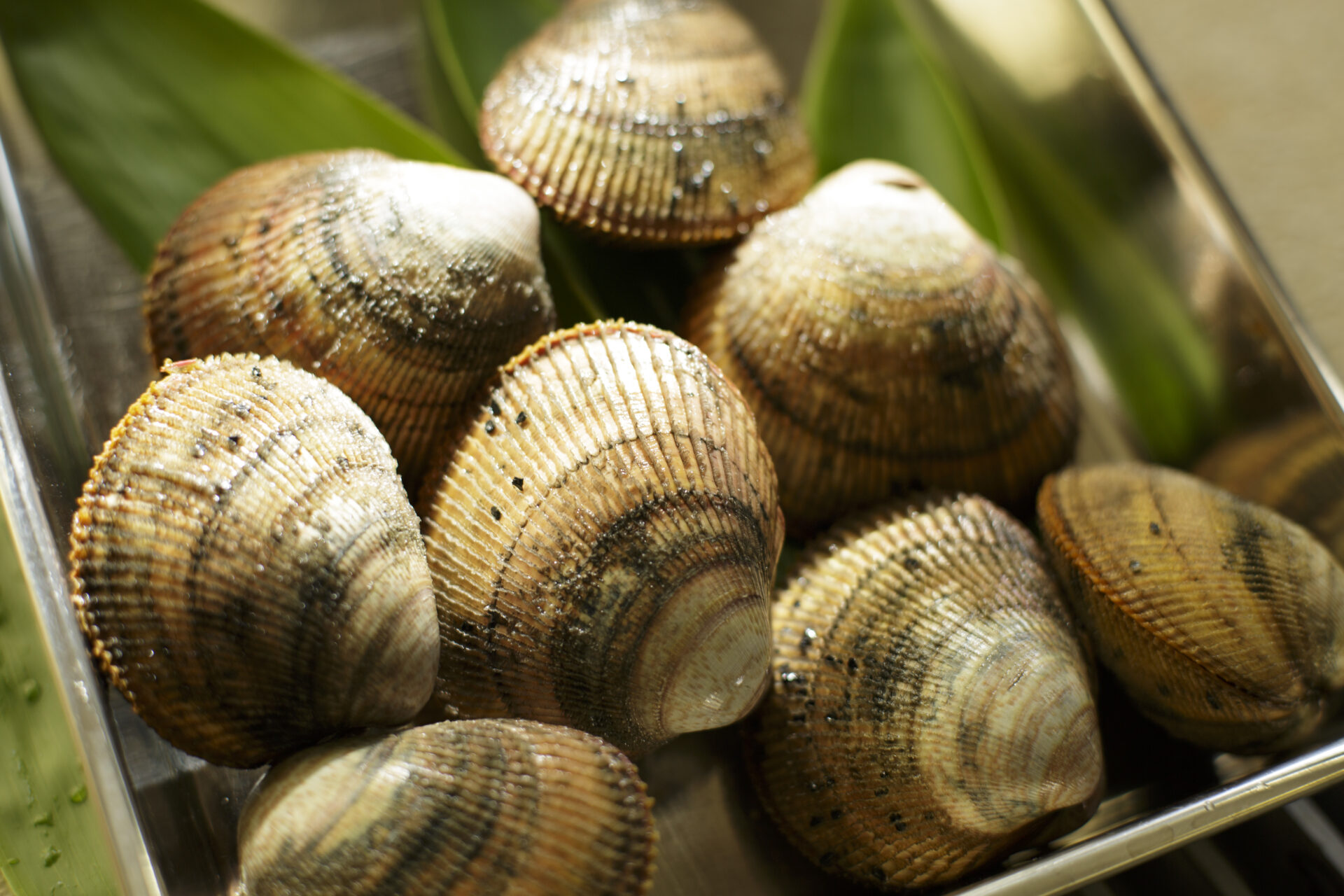
Prominent Chef in the Spotlight: Exploring Satoumi in Search of Ingredients.
On the east coast of the Noto Peninsula in Ishikawa Prefecture, Nanao Bay extends around Noto Island to the shores of Nanao City and Anamizu Town. Located in the northern part of the bay, Ninzaki Fishing Port is a remote place rarely visited even by locals. Here, a prominent and innovative chef has arrived - Tatsuro Ume, chef of the modern Spanish restaurant “respiración” in Kanazawa City.
Opened in 2017 near the Omicho Market in the heart of Kanazawa, “respiración” earned two stars in the Michelin Guide Hokuriku 2021 Special Edition within just four years. At the same time, it was awarded the Michelin Green Star for its commitment to sustainability, including environmental friendliness and support for producers, making it one of the most promising Spanish restaurants in Japan today.
“respiración” operates under a unique system with three chef-owners, one of whom is Mr. Ume, dedicated to creating original recipes using ingredients from Ishikawa Prefecture. Whenever possible, he visits enthusiastic producers to deepen his understanding of the ingredients by observing the production sites firsthand. This time, he has turned his attention to Japanese Cockles (Tori-gai). Nanao Bay is known to those in the know as the production area for its high-quality cockles. Four regions in Nanao Bay collectively produce about 60,000 Noto Cockles annually, with Ninzaki being a major production area. We were shown the aquaculture rafts set up offshore.
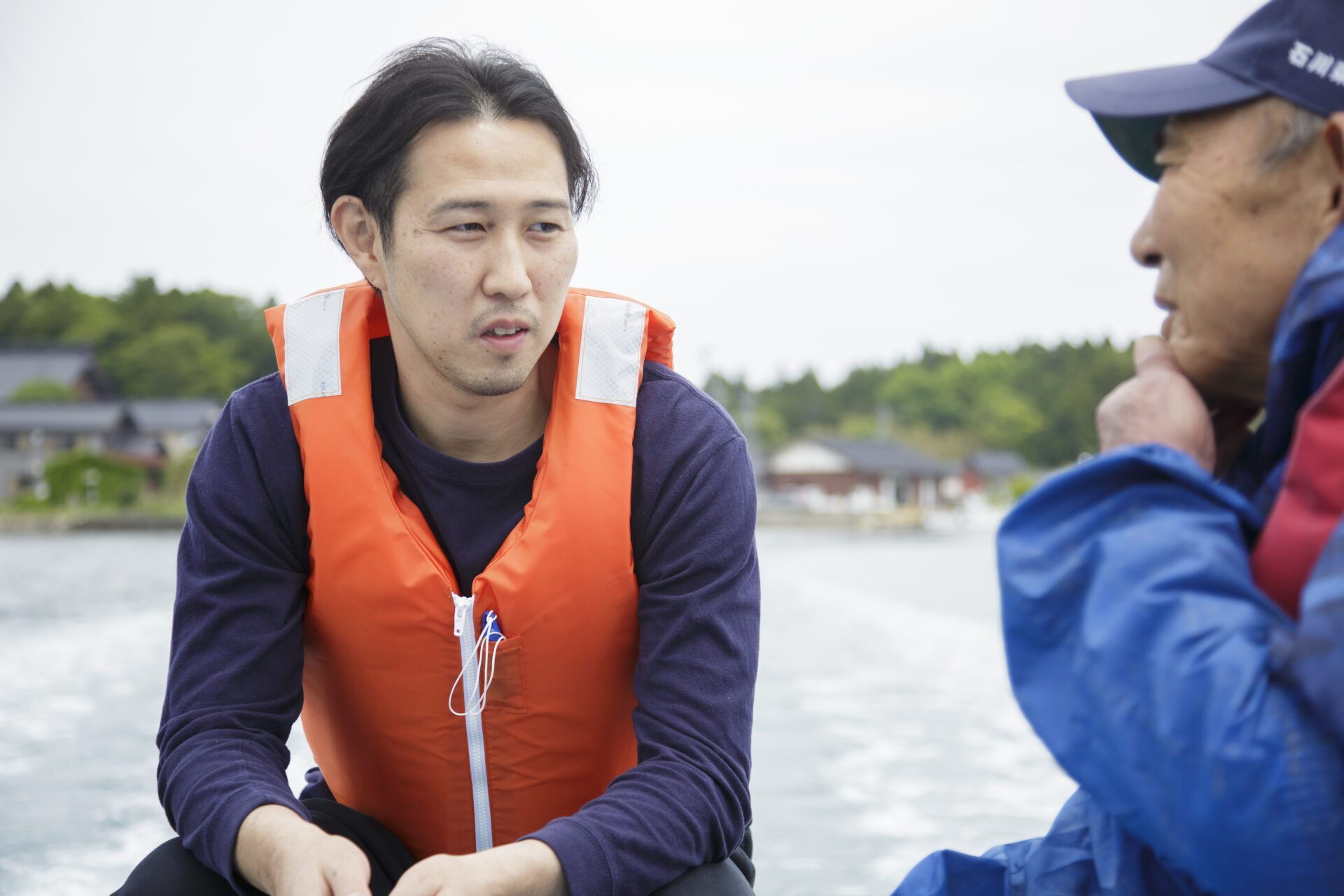
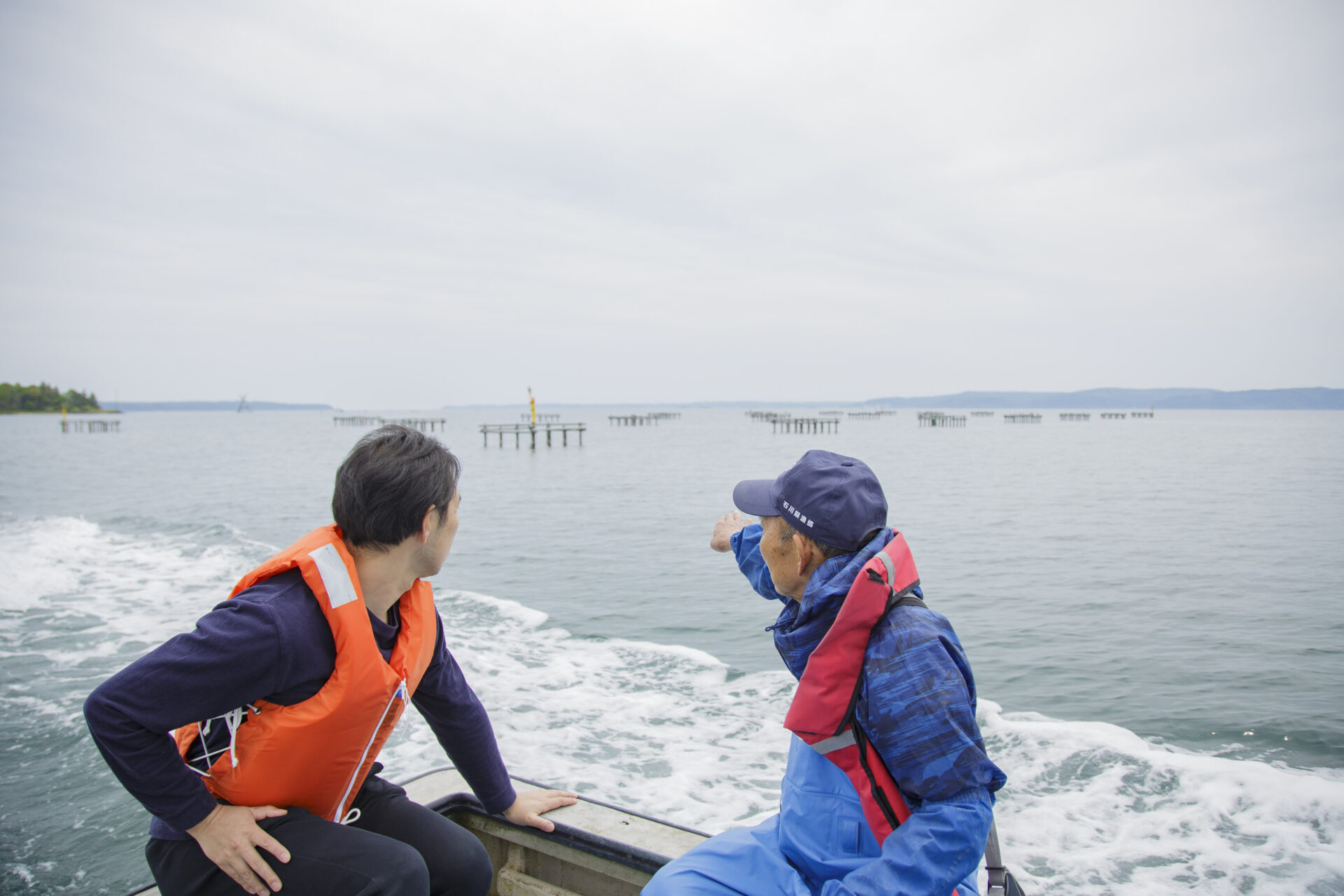
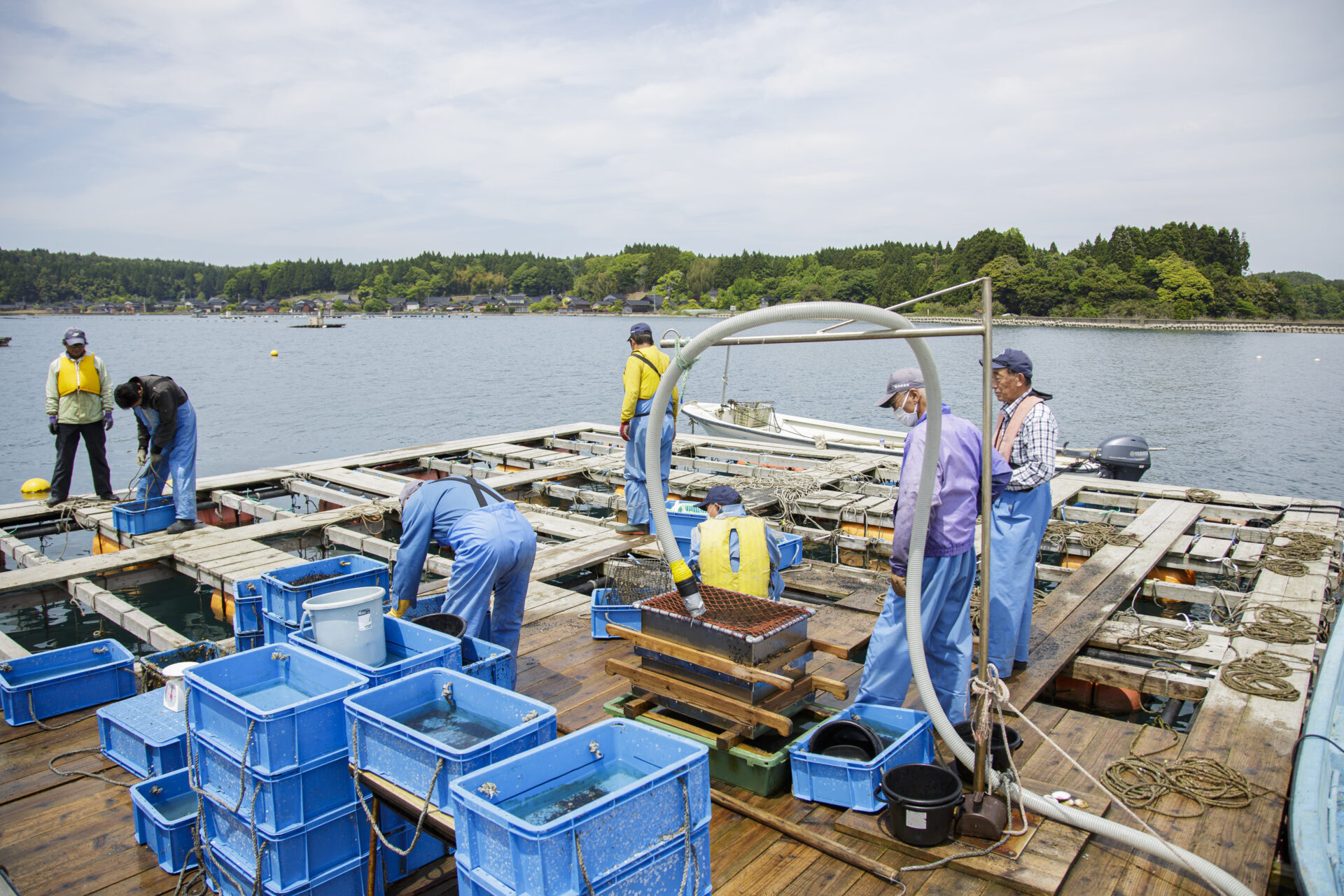
Our guide was Kazuaki Koizumi, head of the Noto Torigai Production Association. On the boat ride to the raft, Mr. Ume and Mr. Koizumi had a conversation.
“I am from Uchinada Town, next to Kanazawa City. Until recently, I had never seen the Sea of Uchiura, which stretches along the east coast of the Noto Peninsula.The other day, I went to Tsukumo Bay, further north from here, to learn about seaweed from an expert, and I found that it is truly a blessed Satoumi environment, which is rare in Japan.The vast deciduous forests of the Noto Peninsula nourish the land, and nutrients that feed the phytoplankton dissolve in the snowmelt and flow into the bay. In the bay's calm environment, various fish and shellfish feed on the abundant phytoplankton. One of my favorite foods is the rock oyster from Uchiura, and when I saw the site, I realized that its deliciousness is derived from this natural environment.” (Mr. Ume)
“In the cultivation of Noto Cockles, we do not provide feed. They grow by consuming the naturally occurring phytoplankton in this sea. Japanese Cockles are produced throughout the country, especially on the Pacific side, but Noto Cockles are generally about twice the size of cockles from other regions. The flesh is also remarkably thick. Seeing them grow so large makes me feel that Nanao Bay is a special body of water.” (Mr. Koizumi)
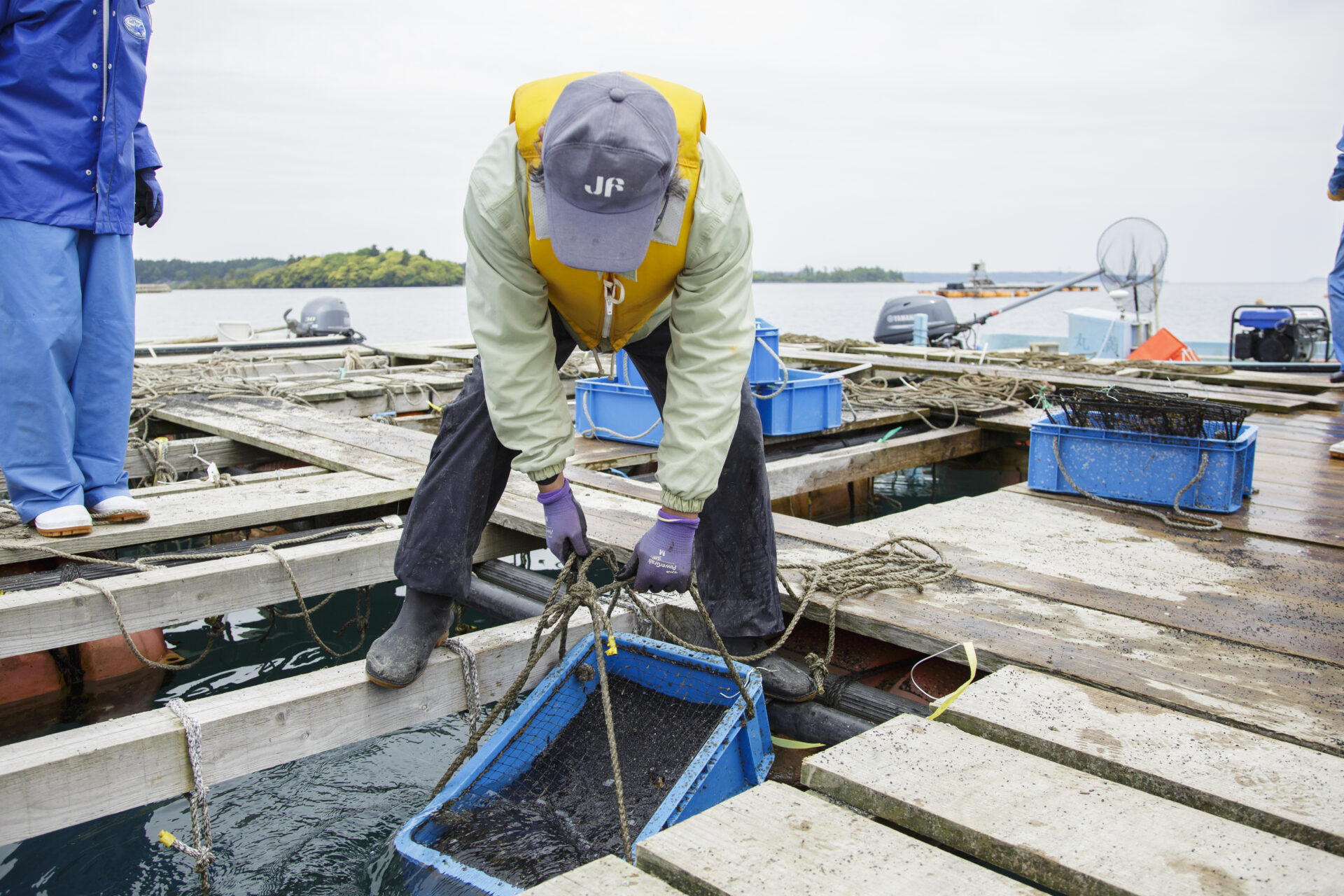
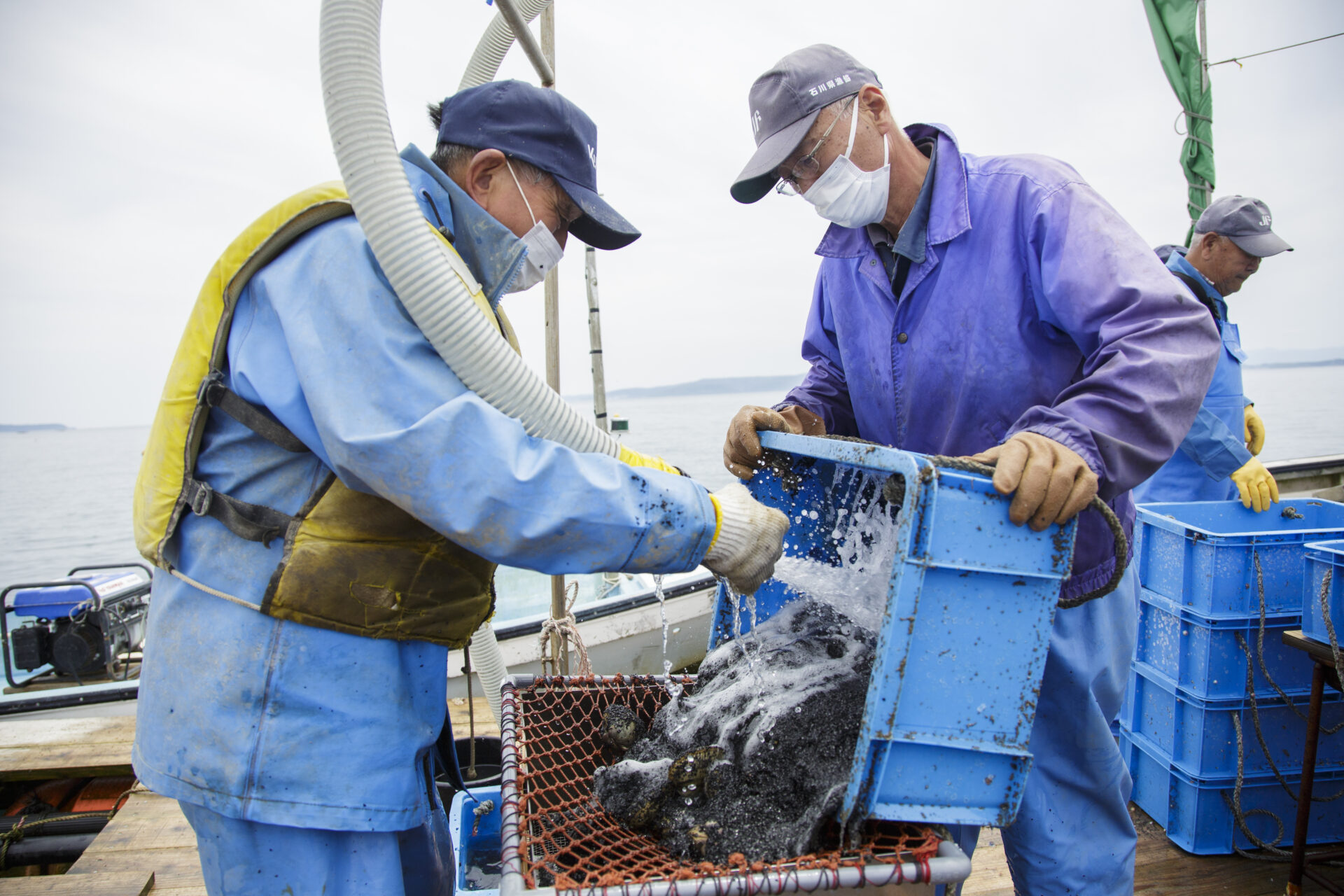
A Year of Careful Cultivation and Protection from Countless Predators.
On one of the rafts made from buoys and wood, harvesting and maintenance work is carried out steadily and quietly. The narrow pathways, about 40 centimeters wide, that crisscross the rafts offer a glimpse of the beautiful indigo sea below. Here, boxes containing Noto cockles are suspended from ropes. The boxes are suspended at depths of up to 15 meters and the ropes are pulled up by hand, requiring considerable physical strength and risk. Finally, the box emerges from the water with a splash, densely packed with fine-grained anthracite. Inside, the Noto cockles are cultivated.
Every year, fishermen in Ninzaki acquire juvenile cockles from the Ishikawa Prefecture Fisheries Research Center and start cultivating them in these boxes from July. Noto Cockles face many natural predators, including octopuses, starfish, black sea bream, and striped beakfish. To protect them, the cockles are placed in boxes filled with anthracite to mimic the seabed sand environment, and are carefully raised under nets. The boxes are periodically lifted for cleaning, with both the boxes and the anthracite undergoing maintenance. The number of cockles is adjusted to about 20 per box as they grow. Barnacles and other organisms often attach to the boxes and nets, and cleaning them is essential to prevent clogging of the mesh, which could lead to oxygen and food shortages for the Noto Cockles inside.
In summer, to avoid exposing the Noto Cockles to the high temperatures of the surface seawater during the day, the work often begins before sunrise. This work continues daily even during the freezing winter months. Harvesting typically takes place from late April to early July each year. The Noto cockles, which have been carefully raised for a year in Nanao Bay, are mainly sold live and are in high demand by renowned sushi and Japanese cuisine restaurants nationwide that are particularly discerning about seafood. But Noto Cockles are only available from spring to early summer, and the limited production makes them extremely rare.
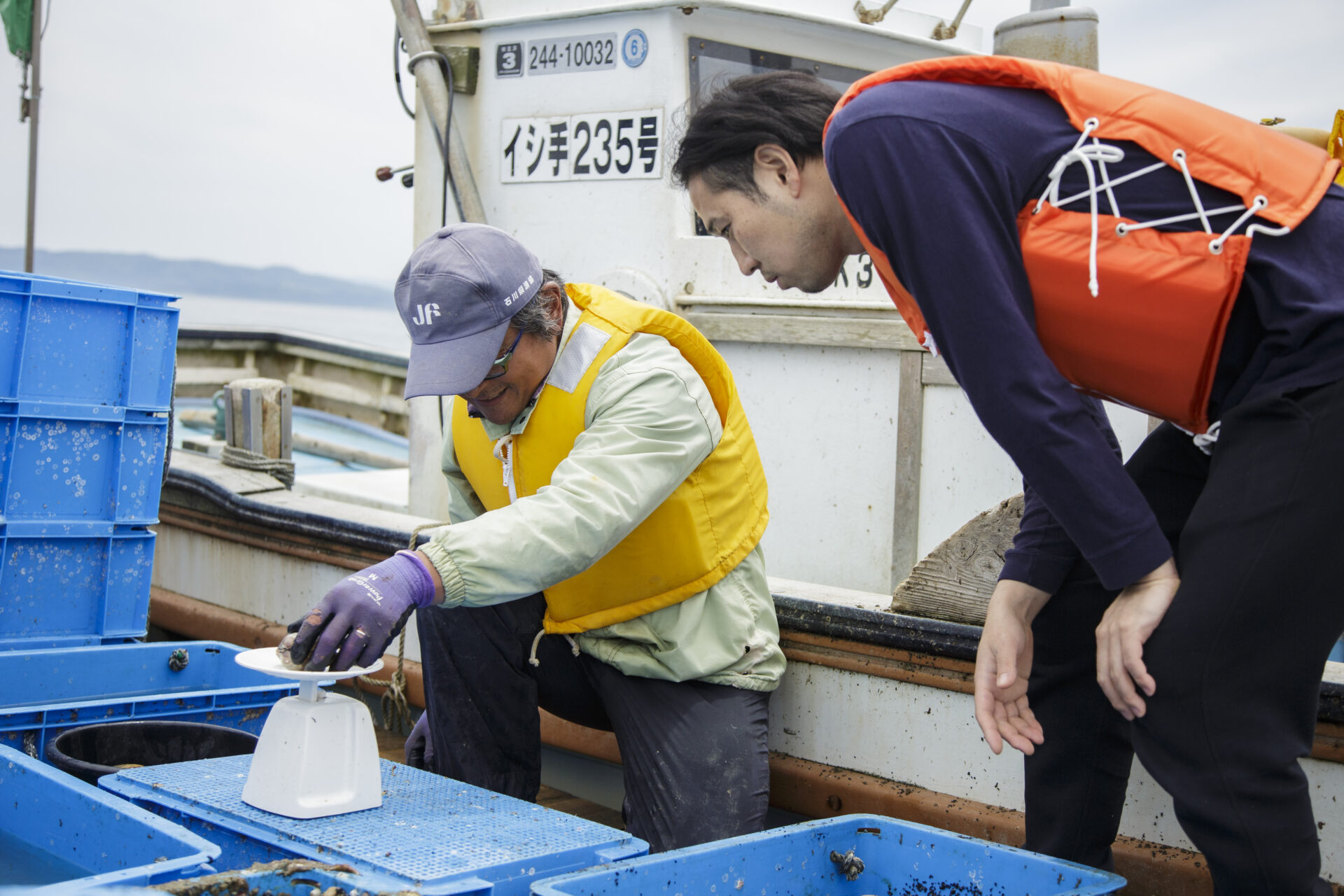
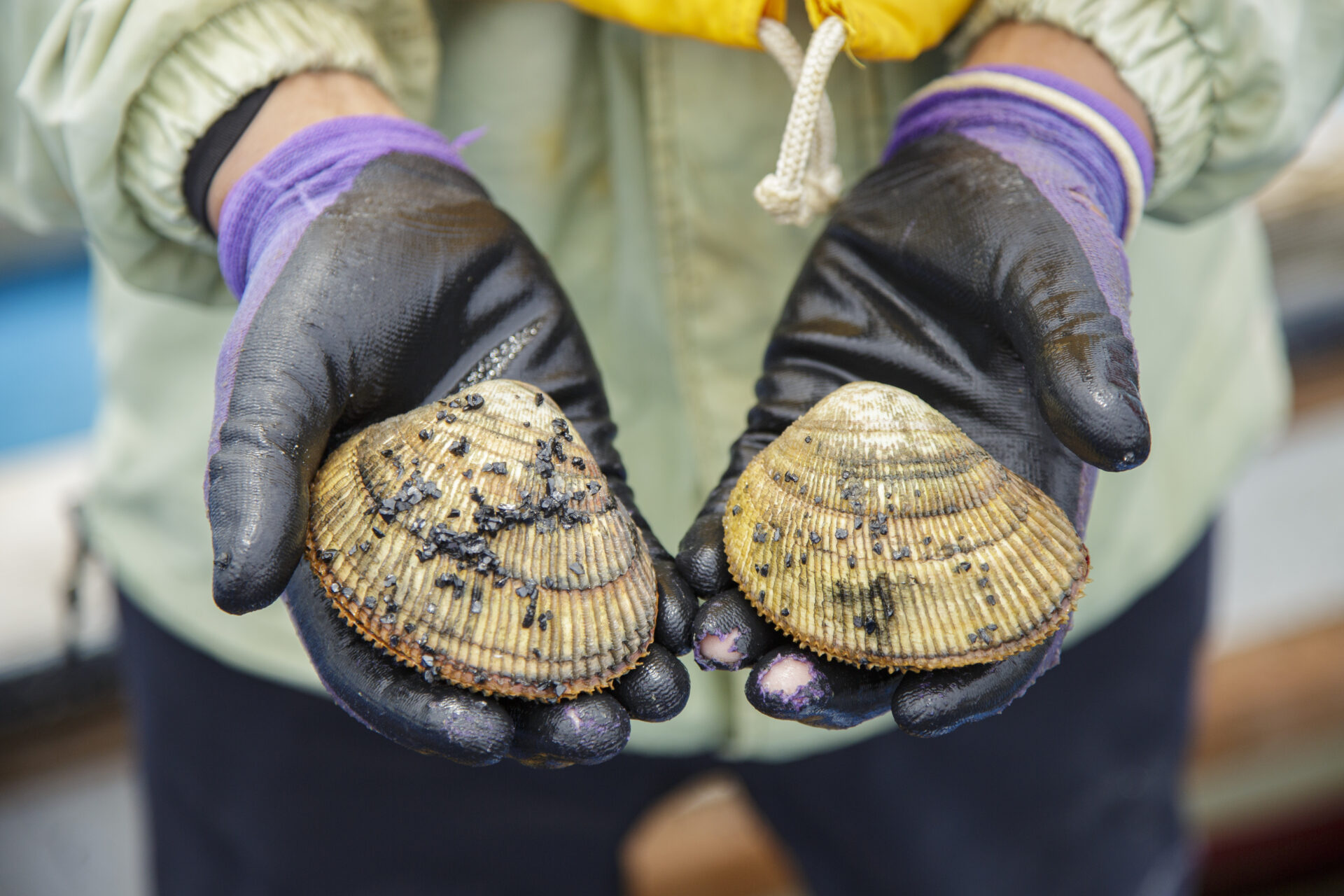
Protecting Fragile Lives: Tireless Effort and Ingenuity for Stable Production
The largest shipments of cockles come from regions such as Mie Prefecture and Aichi Prefecture, where several hundred tons are shipped annually. These are followed by production areas in Osaka Prefecture and Hyogo Prefecture, including the Seto Inland Sea, which supply several tens of tons each year - all from natural sources. Natural cockles from Nanao Bay, on the other hand, have reached only a few hundred kilograms in recent years. Even in 2020, when the production of cultivated Noto Cockles reached its highest volume ever, the total shipment did not exceed 10 tons. Mr. Ume raises questions about the difficulties of cultivating cockles.
This is answered by Yuzuru Kawabata, an emerging Noto Cockle fisherman working hard in Ninzaki.
“Cockles are shellfish that are very sensitive to environmental changes, and natural populations show significant fluctuations in catch volume. In productive years, volumes can reach several hundred tons, as seen in Mie and Aichi prefectures. In Ishikawa Prefecture, however, the natural cockle harvest peaked at about 500 tons in 1989, but has since dropped dramatically to less than one ton. While the exact cause is unknown, it is speculated that changes in environmental factors such as seawater temperature and hypoxia have disrupted the cycle of egg laying, growth into adults, and subsequent egg laying. As a result, we take great care to keep the Noto Cockles suspended at optimal water depths for cultivation. In 2019, the Ishikawa Prefecture Fisheries Research Center installed a stable production support system at two locations in Nanao Bay to monitor water temperature, oxygen concentration, and phytoplankton levels, providing hourly data visualization from the surface to the seabed. We regularly review this data and adjust the depth of the Noto Cockles accordingly.”
Phytoplankton tend to proliferate near the surface where sunlight is abundant. However, cockles are sensitive to high temperatures and become weakened when the water temperature reaches 28°C. The dilemma is that the water temperature is low near the bottom of the deep sea, but the oxygen is in short supply.
“This cockle has a thin shell and is very delicate. The key to yield is how to provide them with the rich nutrients of Nanao Bay with minimal stress,” says Koizumi.
While oysters can thrive in fairly harsh environments, Noto Cockles are delicate and fragile. Mr. Ume seems deeply moved by insights he couldn't get in the marketplace.
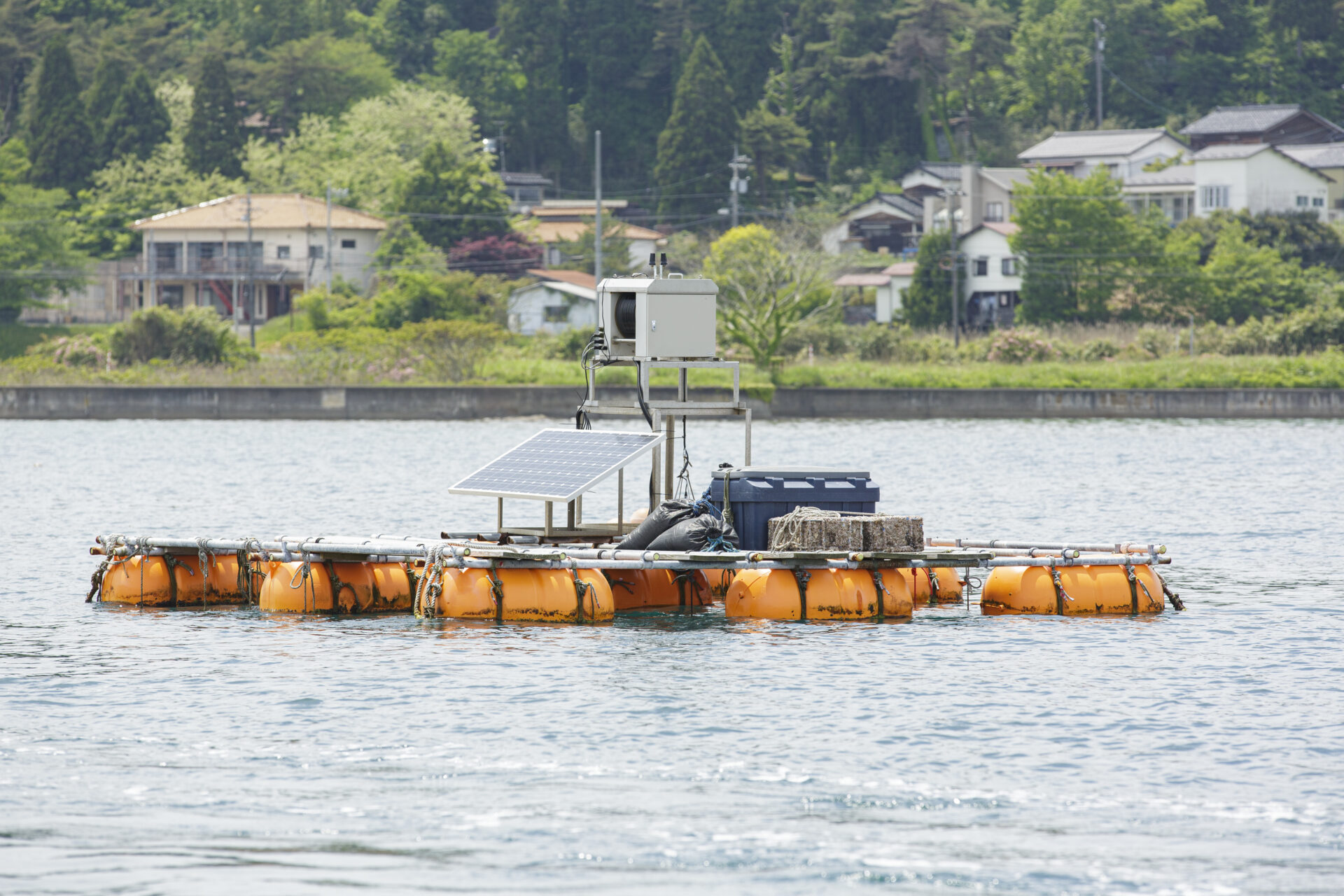
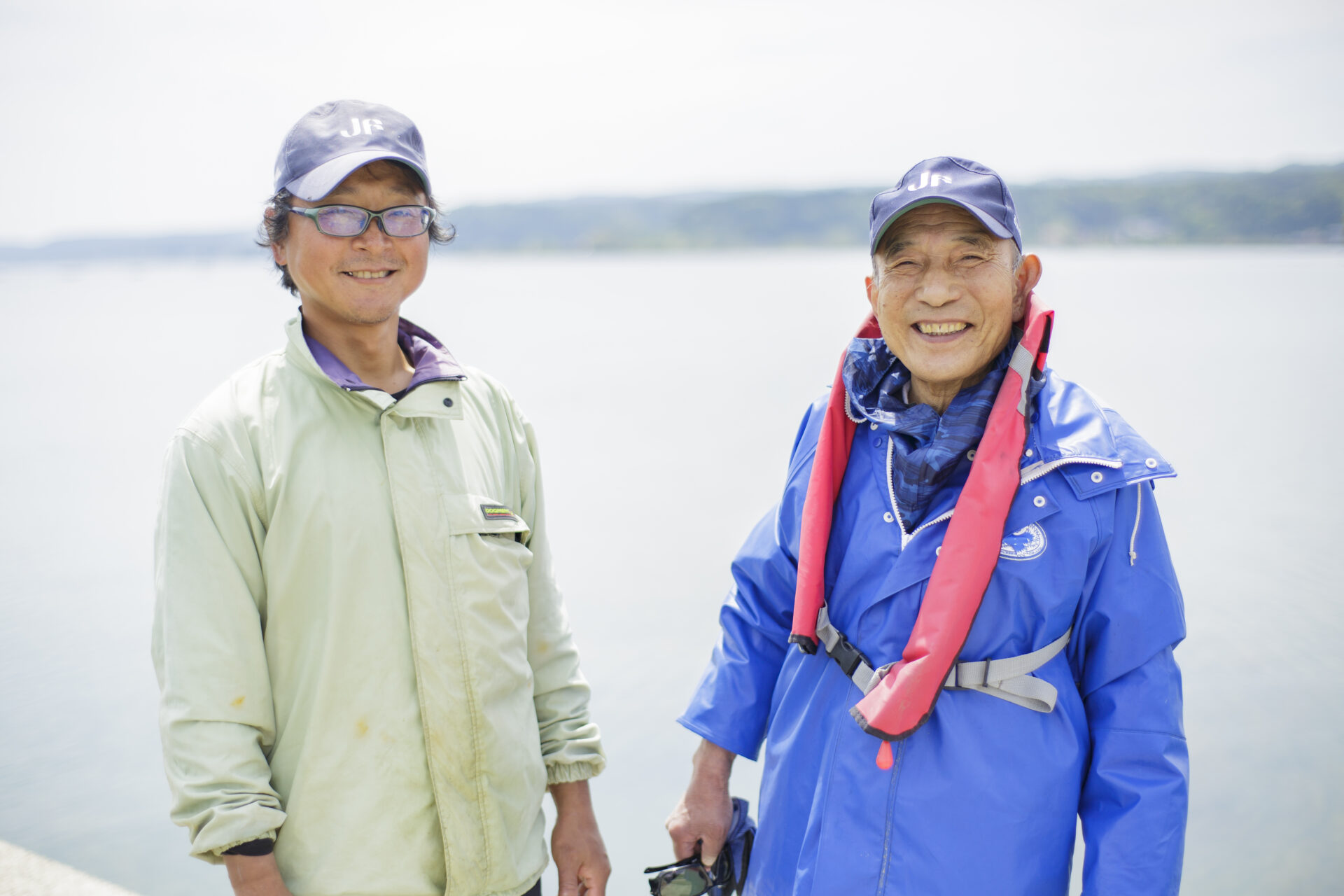
Profile
Tatsuro Ume | Chef-Owner of “respiración”
Born in 1980 in Ishikawa Prefecture, Mr. Ume began his culinary journey with a part-time job at a Japanese restaurant. He began his formal training at “Sumida” in Ryogoku, Tokyo. At the age of 27, he moved to Barcelona, Spain, where he refined his skills at the one-star Michelin restaurant “SAUC.” After working in bars and restaurants in Tokyo, he opened the modern Spanish restaurant “respiración” in Kanazawa City in 2017 with his childhood friends and partners, Keisuke Yagi and Yusuke Kitagawa, and took on the role of head chef. “respiración” was awarded two stars and a Michelin Green Star in the Michelin Guide Hokuriku 2021 Special Edition.
Photographs: DAISHI MIYAZAKI
Text: KOH WATANABE
(supported by Ishikawa Prefecture, Ishikawa New Agriculture Total Support Organization)